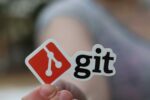CollabNet today released version 6.2 of its TeamForge application life-cycle development and management solution that the company says puts Git and Subversion on equal footing in the enterprise platform.
The new release also delivers on increased integration, visibility and reporting for agile ALM, according to Lothar Schubert, as well as tighter integrations with and orchestration of cloud services for better management, planning and reporting across platforms.
Brian Zeichick, product manager at CollabNet, said TeamForge uses the company’s Connect framework to integrate with Git, code-review tools Gerrit and Review Board, and Black Duck’s Code Sight, which helps automate code search and discovery of open-source assets. “Developers prefer to work off tickets, and traditionally would have to hard-code the correlations between Review Board and the tracker,” he said. “With this release, developers can now associate any review with the actual ticket artifact.”
To bring Git on par with Subversion as an enterprise-ready version-control system, the company made access to either platform available through TeamForge, enabling organizations to use either system, and to manage roles and permissions as well, Zeichick explained. “Now you can leverage hosted repositories for Git and Subversion on premise or in CloudForge,” he said, noting that backup of cloud repositories is enabled through CloudForge.
Zeichick added that TeamForge’s integration with the Hudson/Jenkins continuous integration tools has been enhanced, as they are now leveraged inside TeamForge.
On the management, visibility and planning side, Schubert said there are two dimensions to what is offered in the 6.2 release: expanded central planning capabilities, and enhanced reporting and dashboarding, both to support expanded DevOps processes.
Zeichick explained that a built-in data mart captures such metrics as site activity data, commits, tracking and planning folder information, and much more. “It shows how you’re doing from a product development perspective,” he said.
The breadth of data collected—across tools and server platforms—gives decision-makers detailed reporting they can use to manage the allocation of resources and improve the quality of the work, he added. And, story points have been added to agile burn-down charts to help agile planning and reporting.
The tooling, Zeichick said, “is closer to agile but still flexible enough, so people using other processes can use the tool.”






